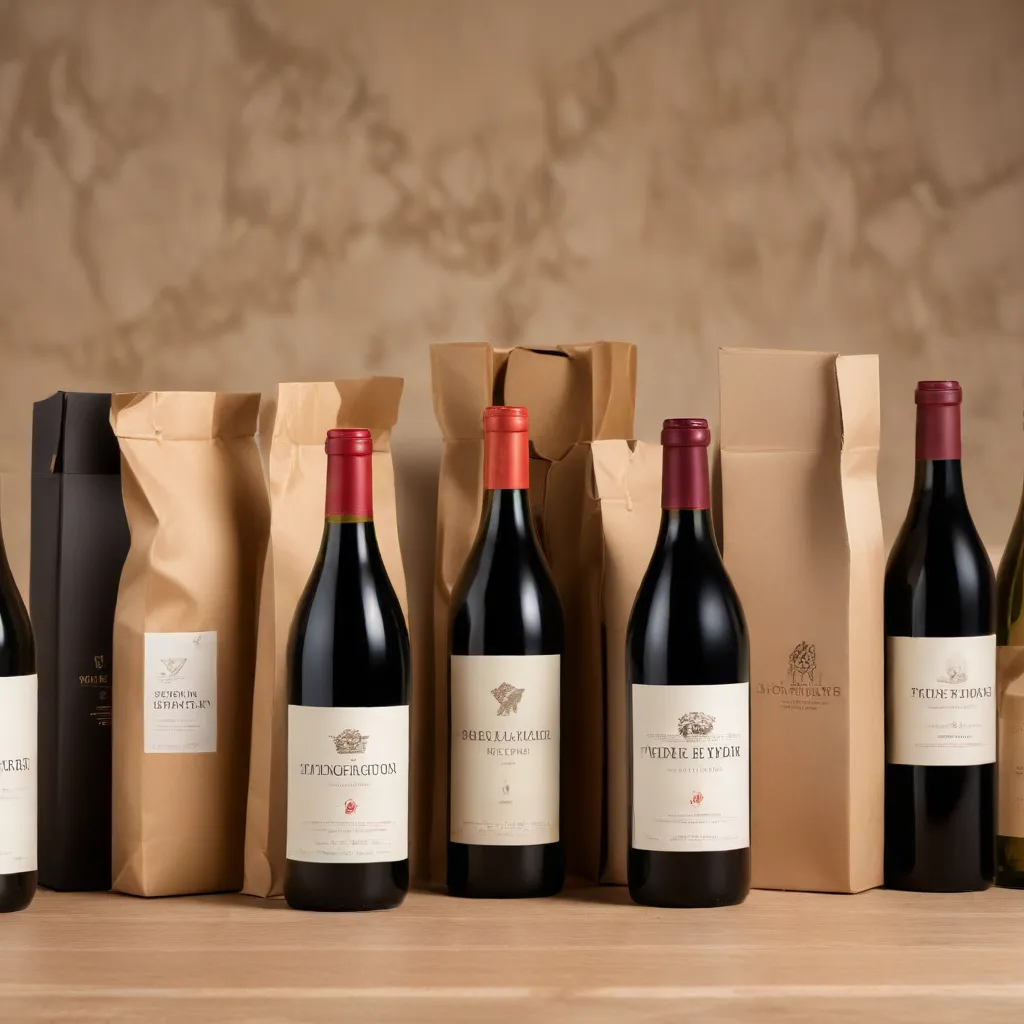
The wine industry is in the midst of a remarkable transformation, driven by the growing demand for sustainable practices that extend far beyond the vineyards. One of the most significant changes unfolding is the evolution of wine packaging, as producers and consumers alike seek more eco-friendly solutions that not only preserve the quality of the wine but also protect the planet.
Historical Trends in Wine Packaging
For centuries, wine has been stored and transported in a variety of vessels, from the ancient amphorae of Greek and Roman civilizations to the iconic glass bottles that became the standard in the 17th century. These glass bottles, with their distinctive shapes and sizes, helped establish the visual identity of various wine regions and varietals. The introduction of cork closures in the Middle Ages revolutionized wine storage, allowing for more effective sealing and better control over the aging process.
However, the traditional glass bottle, while aesthetically pleasing, carries a substantial carbon footprint due to the energy-intensive production and transportation processes. As environmental concerns have risen, the industry has begun to explore more sustainable packaging alternatives that can reduce the wine’s environmental impact without compromising quality or consumer experience.
Sustainability Considerations in Wine Packaging
The push for sustainability in wine packaging is driven by the industry’s growing awareness of the need to minimize its environmental impact. Glass bottles, which account for nearly 29% of the wine industry’s carbon emissions, are being scrutinized for their significant resource consumption and transportation-related emissions. This has sparked a movement towards alternative materials and packaging solutions that offer a more eco-friendly approach.
Factors such as recyclability, reusability, and carbon footprint have become crucial considerations in the evolution of wine packaging. Producers are actively seeking ways to reduce the environmental impact of their products, from lightweight glass bottles to innovative materials like aluminum cans and Tetra Pak cartons.
Innovative Sustainable Wine Packaging Solutions
One of the most promising sustainable packaging solutions is the use of lightweight glass bottles. By reducing the amount of glass used, producers can lower the energy required for production and transportation, ultimately reducing the carbon footprint of their wines. Some wineries have also experimented with recycled glass, further enhancing the sustainability of their packaging.
In addition to glass, alternative packaging formats are gaining popularity, each offering its own set of environmental benefits. Aluminum cans and pouches are lightweight, portable, and highly recyclable, making them a more sustainable choice for casual, everyday wines. Boxed wines, or Bag-in-Box (BiB) systems, utilize significantly less material than traditional glass bottles and are often more energy-efficient to produce and transport.
Consumer Perception and Preferences
As the wine industry embraces sustainable packaging, consumer attitudes and preferences have played a crucial role in shaping these developments. While some consumers may initially be skeptical of alternative packaging formats, education and exposure to their environmental benefits can help shift perceptions.
Younger consumers, in particular, have shown a growing interest in sustainable wine packaging, as they often prioritize convenience, portability, and environmental responsibility when making purchasing decisions. Wineries that effectively communicate the sustainability attributes of their packaging can differentiate themselves in a crowded market and appeal to this eco-conscious demographic.
Regulatory and Industry Initiatives
The push for sustainable wine packaging is not limited to individual producers; it is also driven by regulatory frameworks and industry-wide initiatives. Governments and industry organizations have developed guidelines and standards to promote the use of eco-friendly packaging materials and encourage a circular economy mindset in the wine industry.
Collaboration between wineries, packaging suppliers, and sustainability advocates has been essential in driving innovation and overcoming challenges. As the industry continues to adapt, these partnerships will be crucial in developing effective solutions that balance functionality, consumer preferences, and environmental impact.
Challenges and Opportunities in Sustainable Wine Packaging
Despite the progress made in sustainable wine packaging, there are still hurdles to overcome. Overcoming consumer perceptions that associate premium wine with traditional glass bottles and cork closures is one such challenge. Additionally, the varying availability and capacity of recycling infrastructure across regions can impact the overall sustainability of alternative packaging formats.
However, these challenges also present opportunities for the wine industry to innovate and lead the way in sustainable packaging. As consumer awareness and demand for eco-friendly products continue to grow, wineries that embrace sustainable packaging solutions will be well-positioned to meet the evolving needs of their customers and contribute to a more sustainable future for the industry.
The Future of Sustainable Wine Packaging
The future of wine packaging is likely to be shaped by a harmonious blend of sustainability, innovation, and consumer preferences. Producers who invest in cutting-edge packaging technologies and materials will not only reduce their environmental impact but also cater to the changing demands of today’s wine enthusiasts.
In the years to come, we can expect to see a wider range of sustainable packaging options, from lightweight glass bottles to innovative materials like paper bottles and compostable packaging. The incorporation of smart packaging features, such as QR codes and sensors that provide detailed information and monitor wine quality, will further enhance the consumer experience and strengthen the connection between producers and their customers.
As the wine industry continues to evolve, the focus on sustainability will remain a driving force, pushing producers and packaging suppliers to develop solutions that preserve the quality of their products while protecting the planet. By embracing this transformation, the wine industry has the opportunity to lead the way in sustainable packaging and contribute to a more environmentally conscious future.
To learn more about our commitment to sustainability and explore our wide range of eco-friendly wines, visit www.winegardeninn.com.
